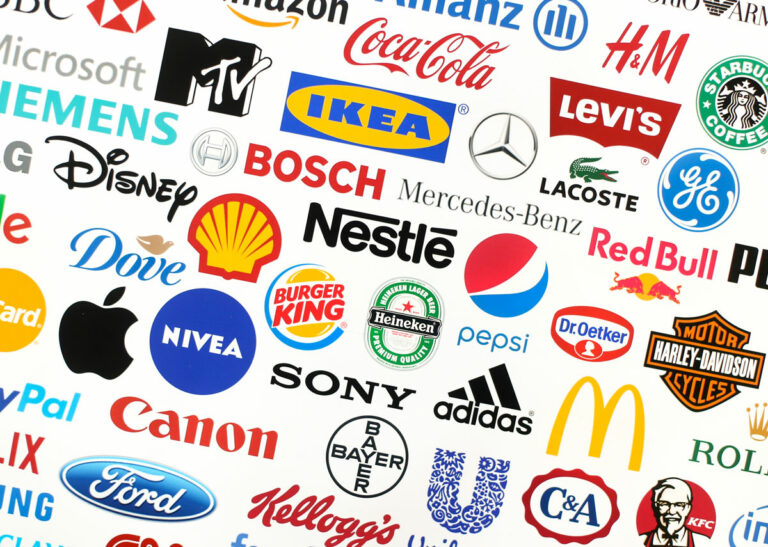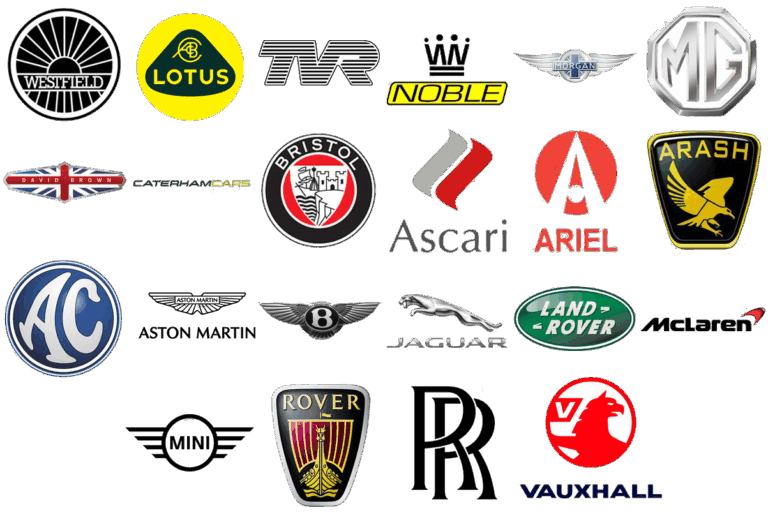What Happens To Brand New Cars That Are Not Sold
What Happens To Brand New Cars That Are Not Sold cars.truckstrend.com
The shimmering allure of a brand-new car on a dealership lot is undeniable. It represents fresh beginnings, cutting-edge technology, and the promise of the open road. But what happens when that gleaming vehicle, or thousands like it, doesn’t find an owner? In an industry driven by production cycles, consumer demand, and fierce competition, it’s inevitable that not every car manufactured will be sold immediately. This raises a fascinating and often misunderstood question: What happens to brand new cars that are not sold? Far from simply gathering dust, these vehicles enter a complex, strategic, and often surprising lifecycle within the automotive ecosystem, impacting manufacturers, dealerships, and even future car buyers. Understanding this process sheds light on the intricate balance of supply and demand, inventory management, and the surprising resilience of the automotive market.
The Initial Holding Period: From Factory to Lot and Beyond
What Happens To Brand New Cars That Are Not Sold
Once a car rolls off the assembly line, its journey begins. Ideally, it’s destined for a specific dealership where a waiting customer will take possession. However, if that immediate sale doesn’t materialize, the car enters an initial holding period, first at the dealership and potentially at larger, centralized storage facilities.
Dealership Lots & Inventory Management: Dealerships are the primary frontline for new car sales. They aim to maintain an optimal inventory level – enough variety to attract buyers, but not so much that they incur excessive holding costs. Cars that sit on the lot for extended periods, typically beyond 60-90 days, are considered "aged inventory." They continue to incur costs for the dealer, including floor planning (interest paid on the loan for the vehicle), insurance, and maintenance (battery checks, tire rotations to prevent flat spots, occasional washes).
Centralized Storage Facilities (Car Parks): For various reasons – overproduction, logistics bottlenecks, or anticipating future demand – manufacturers often utilize massive centralized storage lots. These aren’t "graveyards" in the morbid sense, but rather highly organized hubs where thousands of vehicles await distribution or alternative fates. These facilities are often located near factories, ports, or major transportation hubs. While here, cars are subject to routine checks to ensure their condition remains pristine, but they are still depreciating assets. The longer a car sits, the more its "newness" fades, even if it has zero miles. The "model year rollover" is a significant factor here; once the new model year vehicles arrive, the previous year’s models instantly become "old stock," regardless of their mileage.
Strategies for Moving Unsold Inventory
Manufacturers and dealerships employ a multi-pronged approach to ensure that virtually every car eventually finds a home. These strategies are designed to minimize losses and keep the supply chain flowing.
-
Aggressive Discounts and Incentives: This is perhaps the most visible strategy to consumers. As cars age on the lot or a new model year approaches, manufacturers and dealerships will roll out attractive incentives. These can include:

- Cash Back Rebates: Direct money off the purchase price.
- Low APR Financing: Significantly reduced interest rates on car loans.
- Lease Deals: Highly competitive monthly payments and terms to encourage leasing.
- Special Editions/Bundles: Adding features or unique packages to make the vehicle more appealing.
- Dealer Incentives: Direct payments from the manufacturer to the dealer for selling specific aged models, allowing the dealer to offer deeper discounts.
These incentives directly reduce the profit margin but are deemed necessary to move inventory and avoid greater losses from prolonged holding or eventual scrapping.
Fleet Sales: A significant portion of unsold new vehicles are acquired by large organizations rather than individual consumers. This includes:
- Rental Car Companies: Major rental fleets regularly update their inventory, buying thousands of vehicles at discounted bulk rates. These cars serve their purpose for a year or two before being sold as used cars.
- Corporate Fleets: Companies that provide vehicles to their employees (e.g., sales teams, service technicians).
- Government Agencies: Police departments, municipal services, and other government bodies often purchase vehicles in large quantities.
-
Export Markets: When a specific model experiences low demand in its primary market, manufacturers may choose to export it to countries where that model is more popular, regulations are different, or there’s less competition. This is a complex logistical operation involving shipping and re-homologation (adjusting the car to meet local standards). This often happens with left-hand drive cars from right-hand drive markets, or vice-versa, or models with specific engine configurations.
-
Employee/Internal Sales & Demonstrators: Manufacturers and dealerships often offer significant discounts to their employees on new vehicles. Additionally, some "unsold" new cars may be registered as "demonstrator" vehicles. These are used by dealership staff or offered for extended test drives, effectively becoming "used" cars with very low mileage. After a period, they are sold at a reduced price, often with the balance of the new car warranty.
-
Certified Pre-Owned (CPO) Conversion (for Demos/Loaners): While technically no longer "brand new" once driven as a demo or loaner, vehicles with very low mileage that were never officially sold to a consumer can sometimes be reconditioned and sold through a manufacturer’s Certified Pre-Owned program. This allows them to fetch a higher price than a standard used car and still offer a manufacturer-backed warranty.
The Lifecycle of an Unsold Car: From New to "Old"
The passage of time is the biggest enemy of an unsold new car. Each day it sits, its value depreciates, and its chances of being sold at full MSRP diminish.
- Depreciation: New cars lose a significant portion of their value the moment they’re driven off the lot. For unsold cars, this depreciation occurs even while sitting. The "new" car that was a 2023 model in late 2023 becomes an "older" 2023 model once 2024 models arrive, leading to an immediate drop in perceived and actual value.
- Wear and Tear (Even in Storage): While not being driven, cars can still experience issues. Batteries can drain, tires can develop flat spots, rubber and plastic components can degrade from sun exposure, and minor cosmetic blemishes (dust, bird droppings, minor scratches from transport or storage) can accumulate.
- Refurbishment and Reconditioning: Before a long-sitting car is eventually sold, it often undergoes a thorough reconditioning process. This can include:
- Battery replacement/recharging.
- Tire replacement or rotation/re-balancing.
- Fluid checks and top-offs.
- Deep cleaning, paint correction, and detailing.
- Software updates.
- Addressing any minor cosmetic damage.
The goal is to restore the vehicle to as close to "brand new" condition as possible, despite its age.
Extreme Scenarios: The "Car Graveyards" & Scrapping
While most unsold cars eventually find a home through the strategies above, extreme circumstances can lead to less favorable outcomes.
- Mass Overproduction and Economic Downturns: Historically, periods of severe economic recession or significant shifts in consumer preferences (e.g., the 2008 financial crisis, or sudden drops in demand for sedans in favor of SUVs) have led to massive stockpiles of unsold vehicles. Images of vast fields filled with thousands of cars have often been misconstrued as "graveyards" where cars are simply abandoned. In reality, these are usually temporary holding facilities, albeit sometimes overwhelmed, designed to manage overflow.
- The Ultimate Fate: Scrapping and Parts Harvesting: This is the absolute last resort for brand new, unsold vehicles. A car is typically only scrapped if it has suffered irreparable damage (e.g., during transport, or from a natural disaster like a flood or hail storm), if it’s subject to a major safety recall that makes it unviable to repair, or if it has sat for such an extreme length of time (many years) that it’s no longer economically feasible to sell or recondition. In such cases, valuable components may be harvested for spare parts, and the rest of the vehicle is recycled for its raw materials. This is, however, extremely rare for a truly brand new, undamaged car due to the immense cost of manufacturing.
Practical Advice and Actionable Insights for the Reader
For consumers, understanding the fate of unsold cars can be a significant advantage.
- Be Patient and Strategic: If you’re not in a rush, waiting for the model year changeover (typically late summer/early fall) or the end of the calendar year can yield substantial discounts on the previous year’s models.
- Inspect Thoroughly: If buying a deeply discounted "new" car that’s been sitting, ask about its build date and inspect it meticulously for any signs of prolonged storage wear (e.g., flat spots on tires, faded trim, battery issues). A pre-purchase inspection by an independent mechanic is always a good idea.
- Negotiate Aggressively: Dealers have a strong incentive to move aged inventory. Don’t be afraid to negotiate for a better price, additional features, or extended warranty coverage.
- Understand Warranty Start Dates: Clarify when the manufacturer’s warranty begins. Ideally, it should start on the date you purchase the vehicle, not its original in-service date or build date.
For manufacturers and dealers, robust inventory management, accurate market forecasting, and flexible production lines are paramount to minimizing the number of unsold vehicles and the associated costs.
Concluding Summary
The journey of a brand new car that doesn’t immediately find a buyer is far more intricate and dynamic than simply gathering dust. From strategic storage and aggressive incentive programs to fleet sales, international exports, and even the rare but necessary decision to scrap, the automotive industry employs a sophisticated array of tactics to ensure that almost every vehicle eventually fulfills its purpose. While it presents challenges for manufacturers and dealers in terms of inventory costs and depreciation, it also creates unique opportunities for savvy consumers to acquire a "new" car at a significantly reduced price. The fate of unsold vehicles is a testament to the industry’s continuous adaptation and resourcefulness in balancing the ebb and flow of production and consumer demand.
Summary Table: What Happens To Brand New Cars That Are Not Sold
| Fate/Outcome | Description | Implication for Manufacturer | Implication for Dealer | Implication for Consumer (Buyer) |
|---|---|---|---|---|
| Deep Discounts & Incentives | Manufacturer and dealer offer cash back, low APR, lease deals, or special pricing to move aged inventory. | Reduced profit margins per unit, but clears inventory, maintains sales velocity, and frees up capital. | Reduced profit margins, but essential for clearing aged stock, avoiding floor plan costs, and making room for new models. | Opportunity for significant savings on a "new" car, especially during model year changeovers or year-end sales. |
| Fleet Sales | Vehicles sold in bulk to rental companies, corporations, or government agencies. | Guaranteed large volume sales, helps offload excess inventory quickly, albeit at lower per-unit profit. Builds relationships with major buyers. | May not directly participate in the sale, but contributes to overall sales targets if dealer is involved in local fleet deals. | These cars eventually enter the used car market (e.g., rental returns), offering another source of affordable used vehicles. |
| Export Markets | Cars shipped to countries where demand is higher or market conditions are more favorable. | Recovers value from unsold stock in one market by selling in another; requires complex logistics and potentially re-homologation costs. | Not typically involved, as this is a manufacturer-level decision. | Unlikely to directly impact local consumers, but indirectly ensures global market efficiency. |
| Employee/Internal Sales | Vehicles sold to company employees or registered as "demonstrators" for dealership use. | Provides benefits to employees, allows for practical testing of vehicles, eventually generates a sale (even if at a discount). | Creates a pool of low-mileage "used" vehicles that can be sold at a slight discount, often with CPO benefits. Helps manage internal vehicle needs. | Potential to buy a nearly new car with very low mileage at a discount. Warranty considerations are important. |
| Certified Pre-Owned (CPO) | Very low-mileage demos/loaners reconditioned and sold with manufacturer-backed warranty. | Maintains brand value and provides a premium "used" car option. | Generates additional revenue stream beyond new car sales; provides a higher-profit used car offering than standard trade-ins. | A good option for buyers seeking a reliable, warrantied vehicle that’s nearly new but at a lower price point. |
| Scrapping/Parts Harvesting | Vehicle is dismantled for parts and raw materials; very rare for new cars. | Represents a significant financial loss, only done when no other viable sales channel exists (e.g., severe damage, extreme age, major unfixable recall). | No direct benefit, as the car represents a loss. | Not applicable for purchasing, but ensures responsible end-of-life management for vehicles that cannot be sold. |
Frequently Asked Questions (FAQ)
Q1: Do "unsold" cars just sit forever?
A1: No, it’s extremely rare for a brand new car to sit indefinitely. The automotive industry has sophisticated inventory management systems and various strategies (discounts, fleet sales, exports) to ensure almost every vehicle eventually finds a buyer or is repurposed. Sitting indefinitely represents a significant financial loss.
Q2: Are unsold cars damaged or faulty?
A2: Not typically. Most unsold cars are perfectly fine. Any issues that arise from prolonged storage (like a drained battery or flat-spotted tires) are usually addressed through reconditioning before the car is sold. If a car is significantly damaged (e.g., in transit), it would likely be repaired or written off by insurance, not sold as "new."
Q3: Can I get a great deal on an unsold car?
A3: Absolutely! Unsold cars, especially those from the previous model year or those that have been on the lot for an extended period, are prime candidates for significant discounts, rebates, and favorable financing offers. Dealers are motivated to clear aged inventory to avoid holding costs and make room for newer models.
Q4: What’s the difference between a new car and a "new old stock" car?
A4: A "new old stock" car is still technically new (never titled to a consumer) but is from a previous model year. The main differences are the build date (older), the potential for minor wear from storage (e.g., battery drain), and the starting point of the manufacturer’s warranty (which ideally begins on your purchase date, but always confirm). It’s essentially a brand-new car that’s been waiting longer to be sold.
Q5: Is it bad to buy a car that’s been sitting for a long time?
A5: Not necessarily, but it requires careful inspection. While cars are designed to sit for some time, very long periods can lead to issues like battery degradation, tire flat spots, or minor cosmetic blemishes. Ensure the dealer has performed a thorough pre-delivery inspection and reconditioning. As long as these minor issues are addressed and the warranty starts fresh, it can be an excellent way to get a great deal on a new vehicle.








